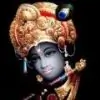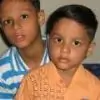"Voodoo" as we know it today originated with African slaves in Haiti; traditional Dahomey regional practices were blended with other African traditions, with elements of Masonry, ritual magick, and Catholicism, creating a unique faith that has survived some of the worst persecutions. The word 'voodoo' is a corruption of the word 'vodun,' a word that means 'god' or 'spirit' in the West African Fon language.
Vodoun traditionally embodies two traditions- obeah, or folk magic, also known colloquially in America as 'hoodoo,' and the ancient African worship of the Loa, an initiatory religious system. The primary worship practice in Vodoun is through possession, whereby the Loas or ancestors are enticed to inhabit or "mount" the bodies of worshippers, using their bodies and voices to communicate with devotees. This practice is the true Vodoun, the traditional ancestral root of the religion. Vodou cosmology In the cosmology of Vodoun, there are three levels of divinity:- Gran Met, or "grand master," also known as Bondye, from the French 'bon dieu: good god' -the true deity, a boundless entity which presides over the spirit world but is not directly worshipped. The Loas, or Lwas, the "Mysteries," the lesser divinities which are central to worship. The Loas are not gods, per se, but the most powerful ancestral spirits- great men and women, Kings, and divine messengers.
- The Dead- the collective ancestral spirits and the spirits of saints. These are ever present with the practitioner, even prior to initiation. It is their actions that usually propel the practitioner to initiation.
- Damballah -the serpent; a primordial deity, who with his companion Ayida, created the cosmos. Those possessed by Damballah do not walk or speak, but writhe on the ground as a serpent. Ayida Wedo- the consort of Damballah; the rainbow. Baron (Baron Samedi)- the Loa of the Dead; usually pictured as a grinning skeleton in a top hat- one of the most recognized of the loas outside of Vodoun Ogoun -a warrior; martial masculinity; related to the Yoruban Orisha of the same name. Erzuli - The embodiment of femininity and love. Similar to the goddess Venus, and related to Santeria's Oshun. Erzulie also has a "dark" aspect, Dantor, who embodies righteous anger, is a protector of women and avenger of domestic violence. Agwe - The primordial sea, ruler of the depths of the ocean. Legba, or Papa Legba- like the Yoruban Eleggua, Legba is the guardian of crossroads. As in Santeria, he must be honored before any other Loa, and it is he who opens the doors between the worlds. Marassa (Mawu-Lisa)- the Marassa are the divine twins, the first man and woman, the first ancestors. They embody archetypal, polar forces akin to yin and yang.
- Ayizan- the legendary first Mambo(Priestess)of Voodoo, who is honored at every ritual. There are three main "families," or classes of Loa, sometimes called Nations. Rada are the original African Loas. They are gentle, beneficient. The Petro (Petwo) are fiery, vengeful aspects, patrons of the slave revolutions of Haiti. They are named for Don Pedro, a principal in the Haitian slave rebellion. The third family, Ghede, "Les Morts," are spirits of the dead. Magic
Another important tradition of Vodoun is magic. Magic is worked for both good and ill, by initiates and by non-initiates. Orthodox traditions generally despise and prohibit harmful magic, but it is not unknown. Spells in Vodou take a variety of forms, the best known being the wanga, or charm. Wangas are usually worked for protection, for healing, for love. The charms known colloquially as gris gris or mojo bags are a form of wanga; these are not restricted to voodoo practice. The "voodoo dolls" so recognizable to Westerners did not originate in Vodoun, but were incorporated into American Voodoo from European folk magic. (Another descendent of the same tradition is the Wiccan "poppet.") In West Africa, where Vodoun originated, there is not to be found anything resembling a "voodoo doll."
Vodoun is primarily an oral tradition, which means there is no orthodoxy of spelling or pronunciation. Secondly, Voodoo is practiced in many parts of the world, and each practice has been influenced by native languages and habits. Names and terms relating to Vodoun are a combination of African, French, Creole, and so on, so you might see many spellings of one name, or many names for one thing. Usually, when you see it spelled "Voodoo," you can assume Western, US practice; "Vodoun" is typically reserved for more traditional West African practice.
https://altreligion.about.com/od/africanreligions/a/realvoodooo.htm
























